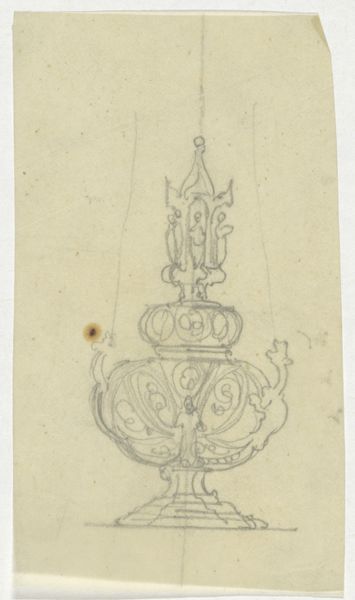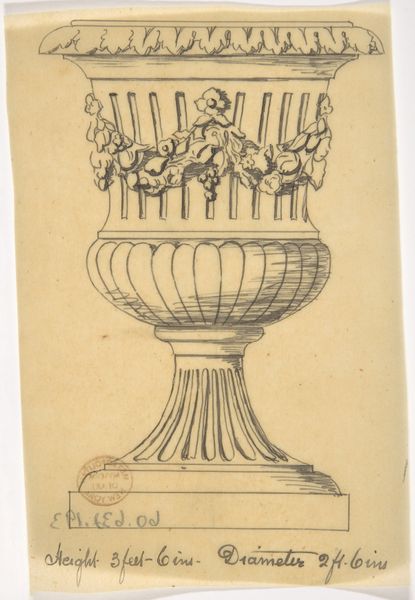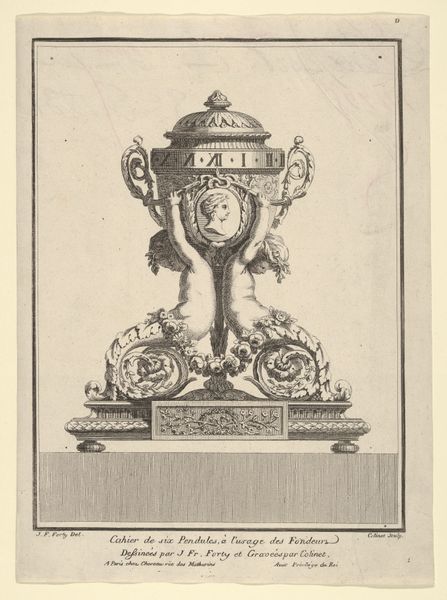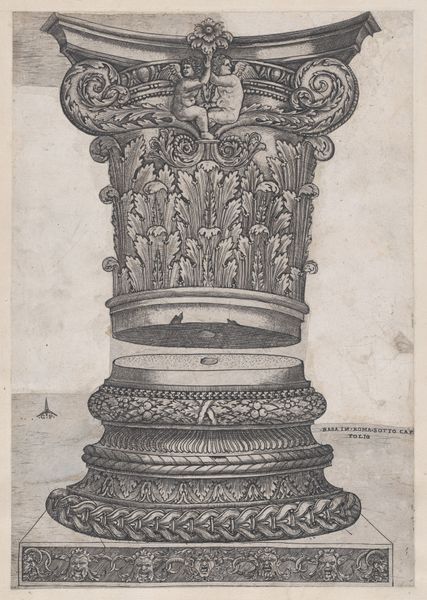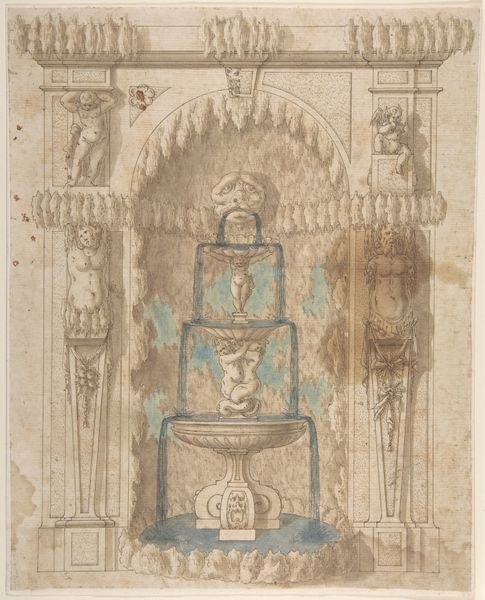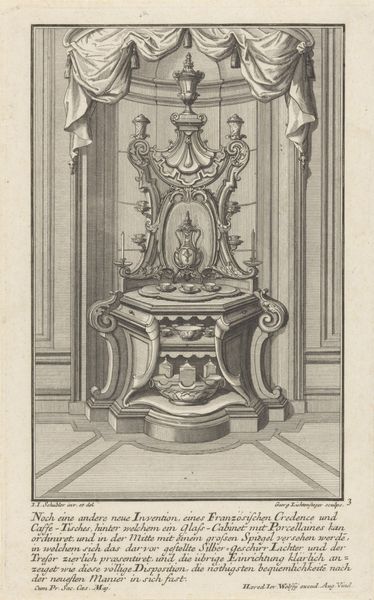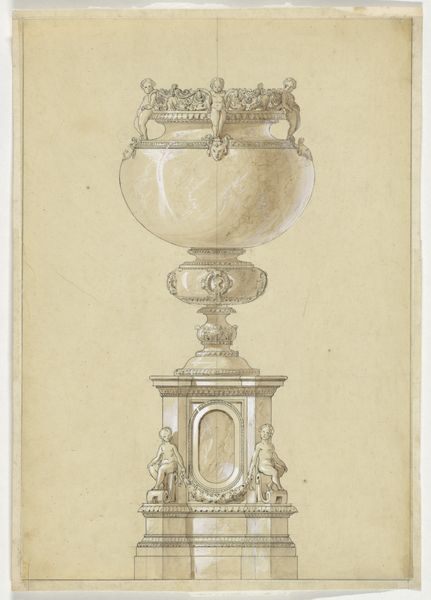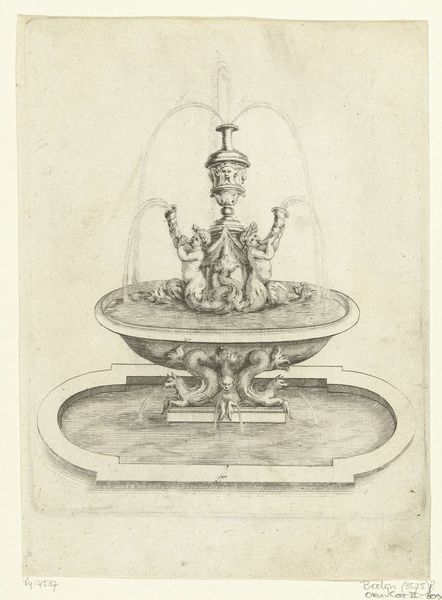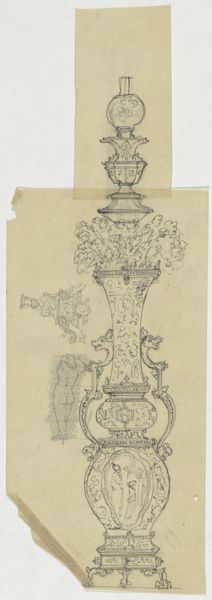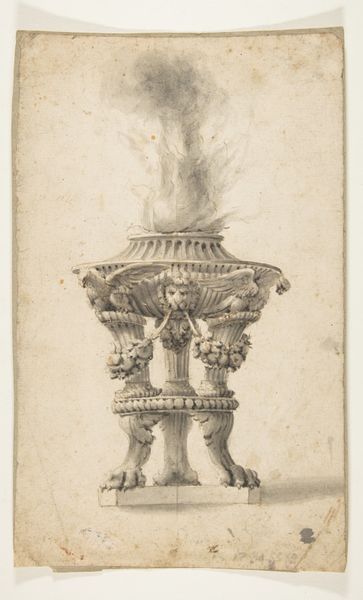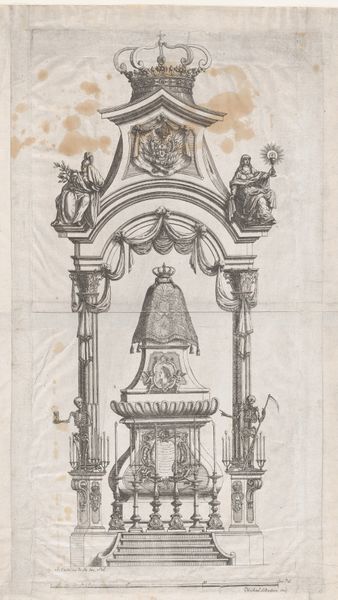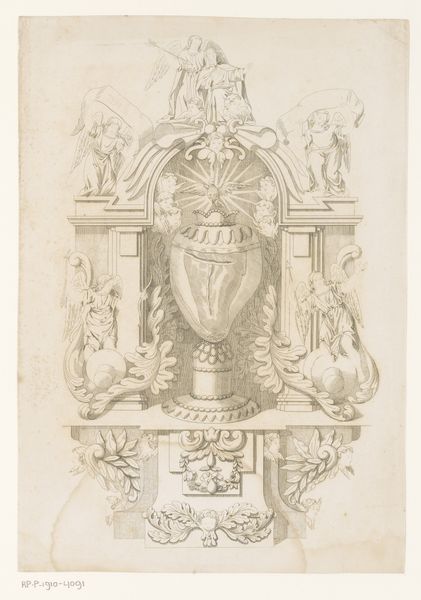
Design for a Fountain with the Three Graces 1565 - 1575
0:00
0:00
drawing, print
#
drawing
# print
#
figuration
#
form
#
11_renaissance
#
history-painting
#
academic-art
#
italian-renaissance
Dimensions: Sheet: 10 3/4 in. × 7 in. (27.3 × 17.8 cm)
Copyright: Public Domain
Curator: Here we have a drawing entitled "Design for a Fountain with the Three Graces," created by Jacques Androuet Du Cerceau sometime between 1565 and 1575. Editor: My first impression is of intricate geometry. The levels and tiers are so neatly ordered, even in a sketched design. It looks quite…controlled. Curator: Indeed. Du Cerceau was known for his detailed architectural drawings. Considering his broader body of work, this piece should be seen as a kind of blueprint. What purpose might this fountain have served? Beyond simple water distribution? Editor: Surely a show of power. Fountains during the Renaissance were significant displays of wealth. Access to running water, the sculpting of such figures…all declarations of affluence and status. Curator: Absolutely. And we see this manifest in the careful labor and choices of materials implied in the sketch, and who had the access to commission the artwork: perhaps someone connected with royal courts or the Medici family. Even on paper, you sense its intended grandeur. Do you think that the symbolism reflects any of this status? Editor: Without a doubt. Consider the "Three Graces" motif at the top. Their presence suggests an allusion to classical antiquity, bringing ideals of beauty, charm, and even generosity into the design. It speaks to both aesthetic cultivation and…virtue, of a sort. Curator: So, it functions as a microcosm of power through material display and symbolism, yet it's only a design. What about that liminal space between representation and objecthood? How did drawings like this function in the exchange of goods and services? Editor: In that regard, it's a kind of sales pitch! Highlighting not just what could be, but what values that ‘what could be’ might represent. It appeals to much more than the practical demands of supplying water; it offers beauty, legacy, taste. Curator: Fascinating! We’ve explored the work's envisioned function and its social implications, reminding us that it would not only deliver fresh water to the people of the city but symbolize prosperity. Editor: And for me, focusing on the formal elegance offers an intimate glance at how carefully chosen components converge to generate cultural impact.
Comments
No comments
Be the first to comment and join the conversation on the ultimate creative platform.
